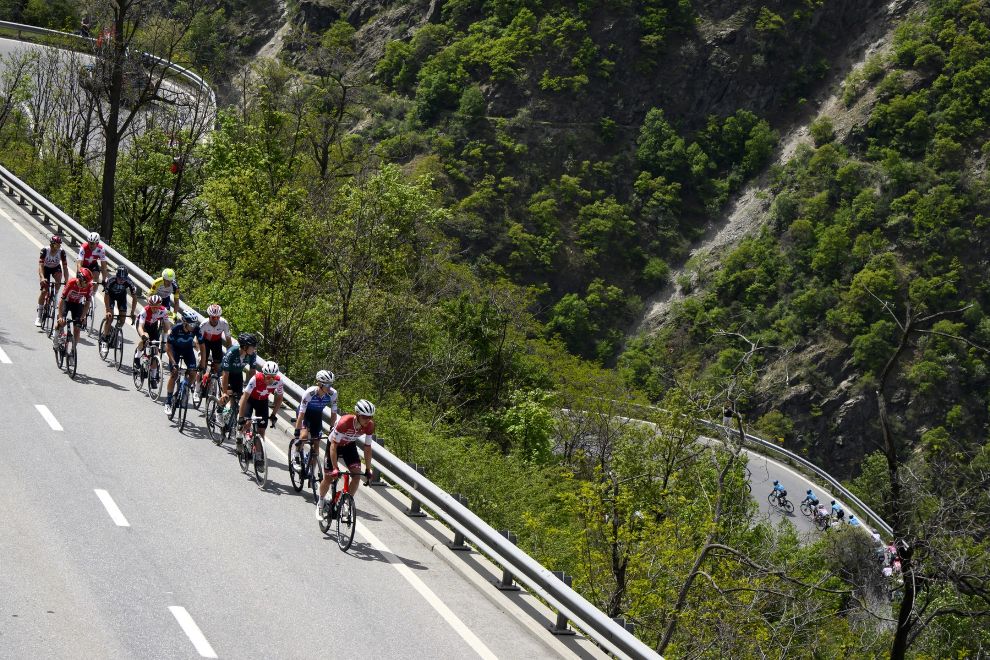Keep a steady pace
The most important tactic you can employ to avoid suffering unnecessarily on a climb is to pace yourself. Beginner cyclists often want to climb to be over quickly so they push really hard to start. Unfortunately, this only burns them out quickly and makes the rest of the climb that much harder and slower. You have a much better chance of doing a climb quickly if you keep your heart rate, cadence, and power relatively steady throughout. Always start a climb slower than you think you should, wait until you get into a rhythm and then maintain that effort. It will hurt less and your overall time will be better because you will slow down less.
Shift gears
This might sound obvious, but if you want to have a good time climbing, you have to ensure your bike has the appropriate gearing for the terrain you’re about to tackle and your current fitness. You want to have enough gears to keep a good spin going. Try for around 80 revolutions per minute as a rule of thumb. Pedalling faster is inefficient and pedalling slower is too taxing. Also, keep in mind that you should change gears before a steeper section of a climb. That way you will minimise the chances of jamming or dropping your chain and grinding your gears.

Fuel your climbs right
Nutrition can be your friend or enemy, depending how you use it. Avoid eating a large meal before setting off on a mountainous ride, especially if it contains a lot of fat and fibre that require a lot of time to digest. Once you start climbing, your blood will be diverted from digestion to your muscles and food left in your belly will only slow you down and cause problems. Leave the sausage and baked beans for a recovery day and go for a porridge with fruit instead. Bread or rice are also good options to base your last pre-ride meal around.
Consider taking a snack for eating on the bike if you’re going to be riding for more than 90 minutes. If you’re planning to conquer a big climb, chances are you will be spending many hours in the saddle. If that’s the case, you should aim for roughly 60 g of carbs per hour of cycling if you want to maintain decent power output the whole way. This usually means eating about two smaller snacks such as energy gels, bars or half a banana every hour.
Remember that you will most likely be unable to eat very much solid food during the climb itself because of the high intensity. You don’t want to accidentally inhale food. Try to have your last snack around 15 minutes before the climbing begins so that your body has enough time to digest. When climbing, it’s better to stick to an energy drink or just water to avoid digestive issues.
If you don’t have to push the pace all day for training or racing purposes, then you can also take advantage of the most effective cycling supplement – caffeine. Plan a coffee stop before the main climb of the day, have your snack and an espresso and watch how you fly up that mountain.
Go light
There are two main things that influence how fast you’ll be able to climb – power output and weight. Improving power is important but it takes time and it doesn’t really fit in here among tactics you can employ quickly. This leaves us with weight. You want to avoid packing any unnecessary items and excess snacks in your backpack. And of course, when it comes to your next upgrade, there’s always a lighter frame, handlebars, wheels, cranks, shoes, helmet and clothing you can consider. It’s worth mentioning that weight means both you and your bike. If you want to have an easier time on climbs, you might want to shed some weight yourself. This is again something that happens over the long-term when you eat well and ride consistently.
Stand up when it matters
As you know from the previous article in the series, it doesn’t really matter how much of the time you climb seated and standing up. Both of these ways to climb have their pros and cons. The best rule of thumb is to use standing climbing for steeper sections of the climb when it would be hard to maintain speed seated. Avoiding slowing down that way will pay off. Check out the previous article for tips on how to efficiently pedal standing up.
All of these tactics and tips will help, but there’s one thing that trumps them all – training. The next article will cover how to best prepare your body for climbing, even if you live in a flat area.




